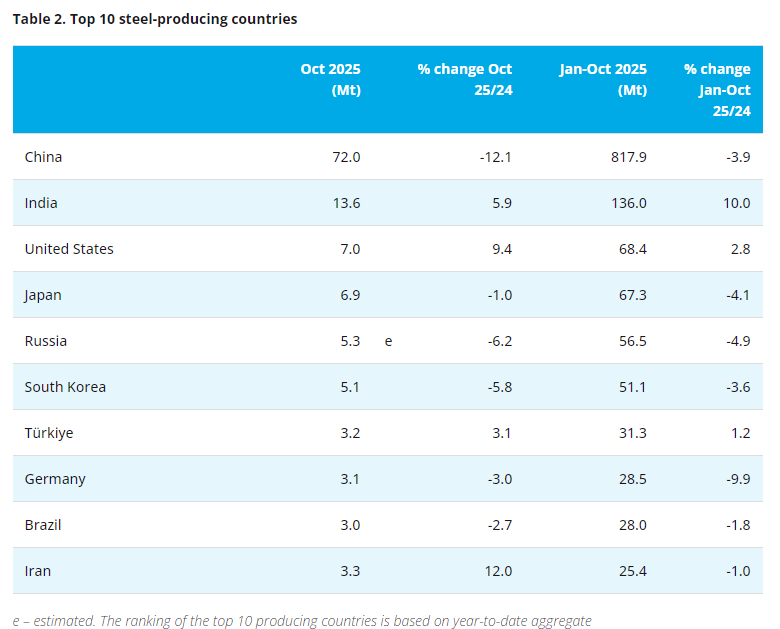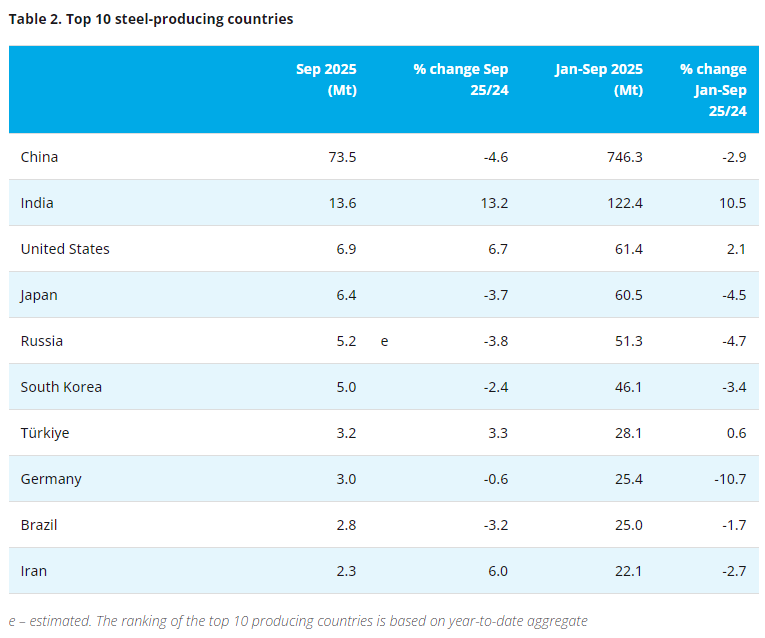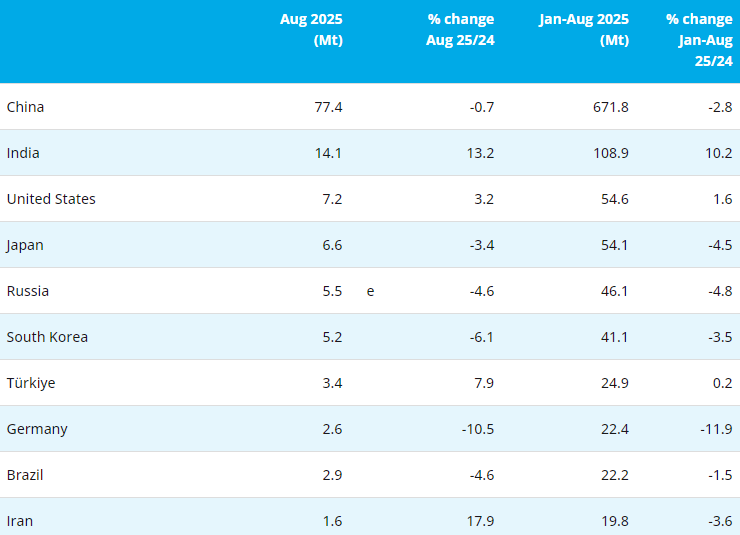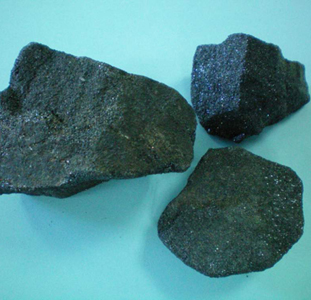[ferro-alloys,com] According to Businessweek, more than 1,400 companies in 19 industries have been instructed to cut back on excess outdated production capacity by the end of September as part of the effort to shift towards slower, more sustainable economic growth.
Steel, ferroalloys, electrolytic aluminum, copper smelting, cement and paper are among areas affected, the Ministry of Industry and Information Technology said in a statement the other day, in which it announced the first-batch target of this year to cut overcapacity.
Excess capacity must be idled by September and eliminated by year-end, the ministry is quoted as saying, even identifying the individual production lines to be shut within factories. But the first level of closures, although extensive in terms of the numbers of companies and the range of industries, is limited in depth.
Only 7.81 million tons of steel out of a national capacity of 970 million have been earmarked for closure; with annual production at 716.5 million tons in 2012, clearly the closures are not going to have the slightest material impact.
Likewise, some 273,000 tons of aluminum have been earmarked for closure at four sites out of a national capacity in excess of 20 million tons. Other industries are similarly targeted with what appear to be almost meaninglessly small demands to idle capacity by September and close it permanently by the end of the year – but the level of closures is missing the point.
Future Steel Production Capacity
This is the thin end of the wedge and sets a precedent for further moves starting in the autumn.
It is widely accepted that something has to be done, and previous attempts by Beijing to urge producers to rationalize have been thwarted by a vagueness of approach and the resolution of local governments to permit closures anywhere other than their own backyard.
Here, Beijing is being very specific. For example, state steel group Wuhan Iron & Steel has been directly ordered to close 400,000 tons of capacity at one specific factory – such a direct instruction is unlikely to be ignored and more will follow. China’s steel production is seven times larger than the world’s No. 2 producer Japan; with slowing construction and manufacturing growth, none of these firms are going to turn a profit with nearly 250 million tons of excess capacity undermining prices.
To begin with, these initial closures may be for production lines that have already been idle for some time, but gradually, if the process continues as planned, it will begin to have an impact.
So will it cut excess capacity and the flood of cheap metal exports in the short term?
No. Maybe even in the medium term the impact will be minimal, but in time (and it will likely take years), Beijing’s efforts may bear fruit where market forces have so far failed.
(Sources: Businessweek )
Copyright © 2013 Ferro-Alloys.Com. All Rights Reserved. Without permission, any unit and individual shall not copy or reprint!
- [Editor:editor]



 Save
Save Print
Print Daily News
Daily News Research
Research Magazine
Magazine Company Database
Company Database Customized Database
Customized Database Conferences
Conferences Advertisement
Advertisement Trade
Trade
















Tell Us What You Think